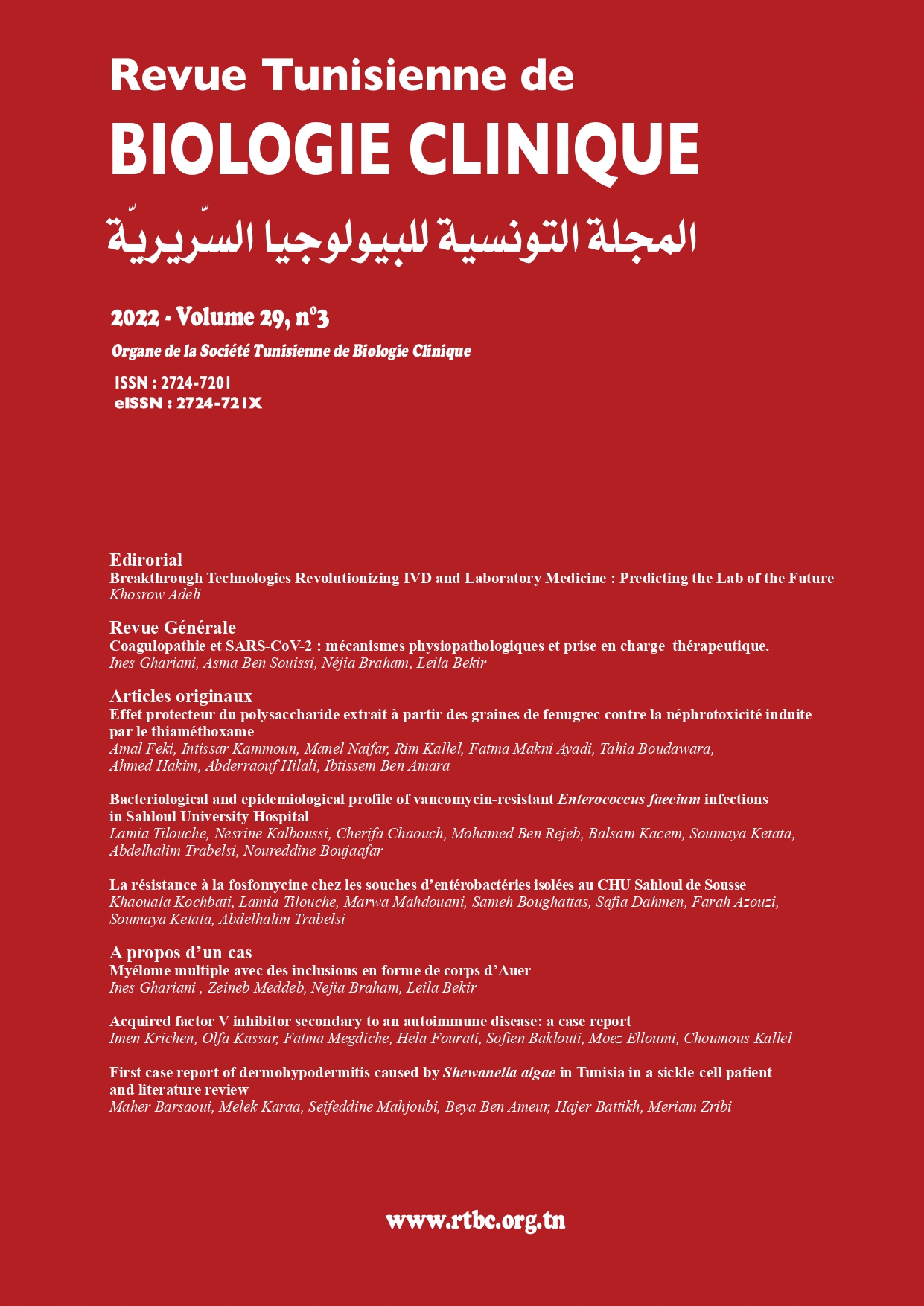Abstract
Since the SARS-CoV-2 pandemic outbreak, growing evidence suggests that patients suffering from COVID-19 are at increased risk of thrombotic events. The sepsis-related activation of the coagulation combined with a high prevalence of common thrombotic risk factors could contribute to this prothrombotic state. COVID-19, especially in its severe form, is associated with a coagulopathy responsible for an increased incidence of venous and arterial thrombosis, pulmonary embolism, and microvascular thrombosis. Biologically, it results in increased D-dimer levels, which have diagnostic and prognostic relevance. Depending on its severity, the COVID-19 infection requires a treatment with low molecular-weight heparin (LMWH) at preventive or semi-therapeutic doses. In case of proven or strongly suspected thrombosis, anticoagulation at therapeutic doses is recommended.

This work is licensed under a Creative Commons Attribution 4.0 International License.
Copyright (c) 2022 Revue Tunisienne de BIOLOGIE CLINIQUE

